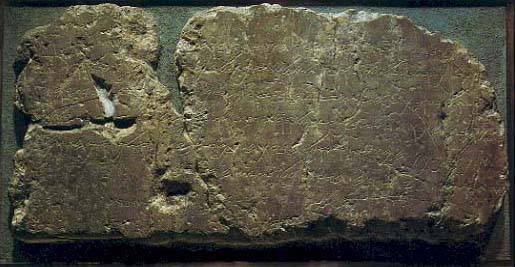Image Details

Erich Lessing
An engineer’s tale. Discovered by some boys at play in 1880, the Siloam Inscription commemorates the dramatic meeting of two teams of tunnelers, digging from opposite directions, during the construction of the tunnel in the reign of Hezekiah. The text, written in paleo-Hebrew, offers an unusual contrast to the Biblical account (2 Kings 22:20 and 2 Chronicles 32:30). Like most ancient commemorative texts, the Biblical account gives the royal perspective, whereas the Siloam Inscription features the style and content of a man who witnessed and participated in the underground encounter. The inclusion of technical details—the length and depth of the tunnel—reflects the knowledge and pride of an engineer, suggesting that the project’s engineer ordered the inscription. The inconspicuous placement of the inscription, 20 feet inside the tunnel at the Siloam Pool end, also suggests the act of a private individual rather than the king, who would typically place the inscription more prominently.
Carried off to Turkey during the Ottoman rule of Palestine, the 2-foot-wide chunk of wall that bears the inscription now lies in the Istanbul Archaeological Museum, sparking calls for its return to Israel (see “Please Return the Siloam Inscription to Jerusalem,” BAR 17:03).
